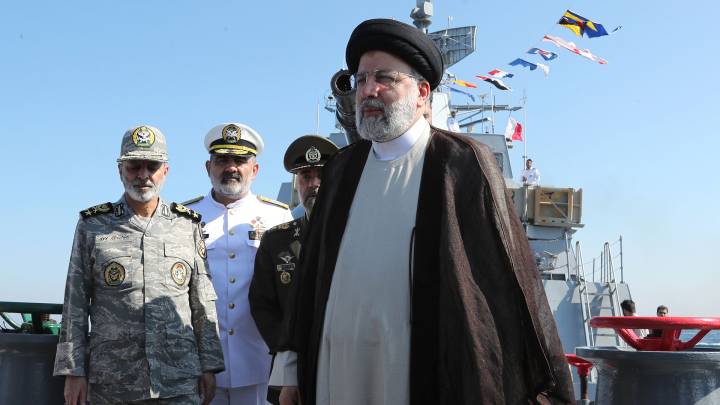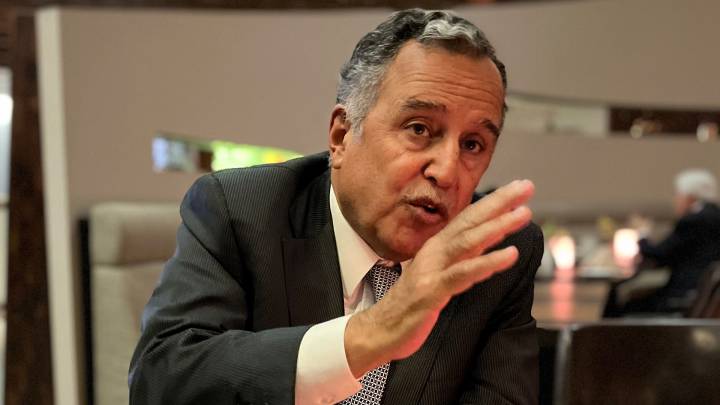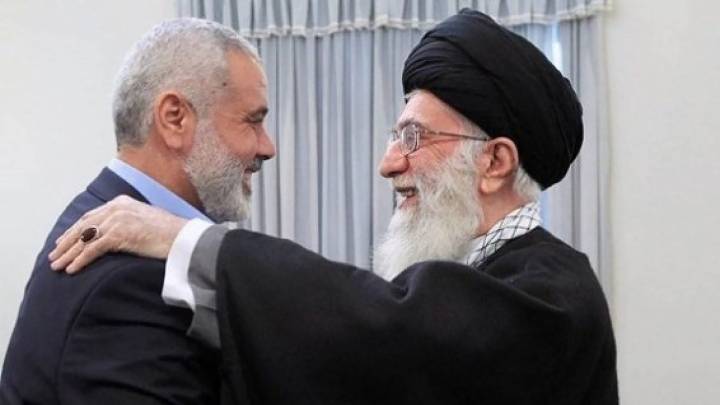Stuck in the present and with no viable perspective for positive change, Iranian citizens feel powerless. Worse, we can expect things to stay as they are, until change will come – suddenly, and possibly from a direction we do not expect.
It’s easy to fall into a pensive mood when arriving in Tehran for a political dialogue. First of all, it’s most probably in the middle of the night. Second, the cab ride into town last nearly an hour, even at this time. And third, with a year having passed since the last visit, one is compelled to think about what has happened over the past months and, as importantly, what did not happen.
The Supreme Leader, Ali Khamenei, is still around, which means that I lost a bet that I foolishly, but purposefully, made last year with the other participants of that delegation. Together with his predecessor, Ruhollah Khomeini, ‘the old man’ continues to stare, through spectacles that seem to date back to the revolution itself if not before, from framed pictures at passport control and in the arrival lounge, and from posters or murals in nearly every public place.
This pair’s watchful eyes signal to citizens and visitors alike the Islamic Republic’s demonstrated longevity. Whoever thought in 1979 that the Islamic Revolution would be short-lived for the Shah to return, or expected the regime to collapse during the eight-year-long war with Iraq, was proven wrong. Neither international sanctions from earlier in this decade nor Washington’s recent “maximum pressure” campaign have brought Tehran to its knees.
As a German, I could not help but think that the Islamic Republic soon will have been around longer than the German Democratic Republic ever existed: The latter started to crumble a month after celebrating its 40th anniversary in the fall of 1989; less than a year later, exactly four days before turning 41, Eastern Germany became part of then-unified Germany. Still, there’s simply no sign of such fundamental change happening in Iran before February next year, when the authorities – contrary to boastful predictions by American hawks such as Mike Pompeo and John Bolton – will most likely celebrate yet another year of their ‘glorious revolution’.
Iranians haven’t been able to invest much in their cars over the past years, as companies like Daimler, Renault and Volkswagen all bowed to US pressure and left Iran.
Nonetheless, a number of things have changed since my last trip to Iran in April 2018: The taxis are a bit more run down, the lighting on the motorway is irregular and dim, while the toll station on the city boundary, just before the Imam Khomeini Shrine, sparkles in bright colors, with garlands and lampions, flowers and decorations. The more dire the times, the more colorful the streets to cheer people up, as someone remarked during an earlier trip to the country. Also notable was an apparent increase of billboards advertising national rather than international products – probably the result of both a drop in people’s purchasing power and a retreat of foreign companies after re-instated US sanctions started to squeeze the economy.
As we are approaching the city, lying snug on the slopes of the Alborz mountains, lights are appearing through the haze. Tehran does not sleep, it just rests somewhat at night. On the way into town, we’re passing an equally colorfully lit Velayat Park, a former military garrison turned into a huge green space in the southern – read: poorer, more conservative – part of Tehran. Here, the bridges crossing the motorway begin to be adorned by dozens of national flags, with lighting chains hanging beneath them in the red-white-and-green tricolor. In the distance, Milad Tower, Tehran’s iconic TV tower, rises in the night sky like a spike.
Driving through downtown, it suddenly strikes me that there’s one more thing that hasn’t changed: The cars around me are still the same as they were seven years ago when I lived in this city. Peugeots as well as Paykans, the Islamic Republic’s ‘national car’, dominate the streets, with an occasional Hyundai in between. Clearly, people haven’t been able to invest much in their cars over the past years, as companies like Daimler, Renault and Volkswagen all bowed to US pressure and left Iran. On the next day, I would see a brand new Peugeot 206 exhibited as a raffle prize, with ribbons and all, in an upscale shopping mall in Northern Tehran – a car whose production ended in Europe in 2013 but which is still churned out in the Islamic Republic, under license by Iran Khodro.
In 2004, the US – unwilling to sit at the table – torpedoed the talks from afar by pressuring the Europeans to make unsatisfiable demands. A year later, a populist-conservative president, Mahmoud Ahmadinejad, rose to power.
Just before we’re reaching the hotel, my nocturnal reflections arrive at the quintessential poem composed by German essayist and writer, Heinrich Heine:
Night thoughts (Nachtgedanken)
Thinking of Germany at night
Just puts all thought of sleep to flight;
No longer I can close an eye,
Tears gather and I start to cry.
Heine, an exile in his twelfth year in Paris, wrote these verses exactly 175 years ago, in 1844, when ‘Germany’ was still a motley collection of monarchies. While not a political figure per se, his poems nonetheless contributed to the pre-revolutionary mood on the other side of the Rhine, where in 1848 the first freely elected parliament of Germany tried – and failed – to establish a parliamentary democracy in the German Empire.
Obviously, there is little connection to Iran today, and as a foreigner I could not get as emotional about this country as Heine did about his own fatherland (and mine). Yet even an outsider can feel the immense frustration over Iran’s current situation, which can easily rob any empathetic political analyst of his or her sleep. Plus, the question of what should be an appropriate historical analogy to the Islamic Republic’s present travails would come up repeatedly during the next two days of delegation visits and debate.
Therefore, just 48 hours later, I would again be sitting in a car in the middle of the night, trying to make sense of what we had heard from our Iranian counterparts. There were indeed long complaints about how Europe could and would not deliver on the 2015 nuclear deal, and what it would have to do to prevent the situation in Iran from deteriorating.
Quite precisely, one interlocutor suggested that the dilemma was the same as in 2004: Then, France, Germany and the United Kingdom had just begun negotiations with Iran on its previously uncovered nuclear program. The United States – unwilling to sit at the table – torpedoed the talks from afar by pressuring the Europeans to make unsatisfiable demands. A year later, a populist-conservative president, Mahmoud Ahmadinejad, rose to power, precluding any chance to strike a deal until his more moderate successor – the incumbent Hassan Rouhani – came into office eight years later.
To many young Iranians, the recent floods devastating various Iranian provinces were a case in point: Authorities seemed to be busy showing the people that they were helping rather than actually helping them.
Our interlocutor’s implication was that, unless the EU manages to keep the nuclear deal alive, the parliamentary elections in 2020 followed by the presidential ballot in 2021 would usher in the hardliners in Tehran again. This would bar any broader rapprochement for the foreseeable future, if not, worse, possibly lead to a military confrontation with the United States that the Europeans so desperately, and successfully, aimed to prevent after the 2003 invasion of Iraq. With a US Vice President, Mike Pence, and a Secretary of State, Mike Pompeo, whose end-of-days belief mirrors the millenarianism of the apocalyptic Ahmadinejad, such an outcome can easily be imagined today
Outside of the official talks, young Iranians told me about how they in turn conceive the situation to be rather like 1978. They feel that the regime not only has lost all legitimacy, but also – given how hijab rules had relaxed these days – no longer seemed to care. To them, the recent floods devastating various Iranian provinces were a case in point: Authorities seemed to be busy showing the people that they were helping rather than actually helping them. Witness the obscene competition that emerged between government-led efforts and those directed by the Islamic Revolutionary Guards Corps (IRGC), with each accusing the other of incompetence and a drive for photo-ops rather than actual relief
However, it’s neither 1978 nor 2004, and that’s because both 1979 and 2009 happened.
It’s not – or at least, most likely not – pre-revolutionary times in Iran, because Iranians, for all their dissatisfaction with the current regime, do not want another bloody overthrow. In particular, they are acutely aware of outside powers waiting to take advantage of any weakening of Tehran – like Iraq did in 1980 when attacking its turmoil-stricken neighbor, as Soviet Russia tried to do in 1945 after World War II, and as Great Britain or the Ottoman Empire did numerous times over the preceding centuries.
Even if some young Iranians have developed a newfound sympathy for the late Shah’s son, Reza Pahlavi, this should not be read as an invitation to an outside power to “bring him back”. True, the memory of his father’s often hard-handed rule has faded, while an appreciation of Iran then being recognized by the world as a great nation has resurfaced. Yet it's not clear, what the son would stand for beyond his claim to be a secular democratic leader. Moreover, Pahlavi’s potential to become a uniting figure of national grandeur transcending current political factions is hampered precisely by any appearance of the current US government utilizing him to this effect. His December 2018 public speech at a pro-Israeli Washington think tank with hawkish views on Iran raised the specter of renewed American meddling, at least from Tehran’s perspective. For the moment, his chances of returning to the Peacock Throne are therefore rather slim.
Major General Hossein Salami, promises a continuation, if not expansion, of the IRGCs defining role both with regard to Iran’s external defense posture and its internal system of repression and corruption.
In a similar vein, current times are also not comparable to 2004, because of the profound disillusionment that set in with the crushing of the Iranian reform movement five years later. After now four decades of the Islamic Republic, people have lost hope of the regime allowing for more than gradual, incremental internal changes. Instead, they know from experience that popular reform demands will be violently suppressed, as was the case in 1999, 2009, and again in early 2018.
This is not to say that there hasn’t been any change under the regime of the Islamic Republic, or that the latter is monolithic and only depends on the whims of a single faction or even person. Yet whenever the demands for reform threatened the religious-conservative establishment in either their beliefs, worldviews or more mundane interests such as power and money, the clerics pushed back. When citizens dare vote for a seemingly unconventional candidate promising to bring change as president, like they did in practically every election since 1997, “the system” will sideline that person – or even prevent him from taking office in the first place.
Ironically, the most recent addendum to Washington’s maximum pressure campaign, the listing of the IRGC as a ‘foreign terrorist organization’, actually helped the latter gather popular support. In an inevitable rally-round-the-flag effect, even staunch reformers that had served long prison sentences following the 2009 Green Revolt came out in defense of the Guards. And in the mysterious ways of how the Islamic Republic functions, the Supreme Leader would change the Guards’ leadership a couple of days later, unexpectedly replacing the chief commander serving in this position for twelve years with his deputy of the past decade. The latter, Major General Hossein Salami, promises a continuation, if not expansion, of the IRGCs defining role both with regard to Iran’s external defense posture and its internal system of repression and corruption.
Thinking again about Iran and what the future may hold for this country during my night ride to the airport, I felt overwhelmed by the presence of seemingly unstoppable forces. Here’s a country beholden to a clique of aging revolutionaries suppressing its people and exploiting its riches. There’s the government of another country, much more powerful in principle but not (yet) mighty enough to impose its will, that seeks to topple said regime but doesn’t really bother what comes next. There are neighbors both near and far with their own – often competing – interests, and the population of the wider region that has suffered from decades of authoritarian rule, conflicts, economic decline, foreign interventions, and broader societal neglect. What could any individual possibly do about this?
The Germany Heine envisaged came about only much later, in 1871 – fifteen years after his death in exile. The country’s first seven decades would be marred by two world wars and the Holocaust. The next seven decades would be marked by freedom, democracy, prosperity and, ultimately, unity, thanks to European integration and transatlantic protection. Yet his work still serves as a reference point for a population’s – regular, if not constant – self-reflection.
While the poet could not foresee what would happen to his home country, his writings could support the process of living through it. Likewise, political analysts – despite their profession – cannot foretell how change will come but they can advise on what to do to be prepared for it, if and when it arrives. For Iran, this means to foster social cohesion by developing a vision for all its citizens to unite behind; for outside governments, it means supporting those who can do that while minimizing any possible threats emanating from the country preferably through diplomatic means. And to prepare for the unexpected, the things we cannot control.




